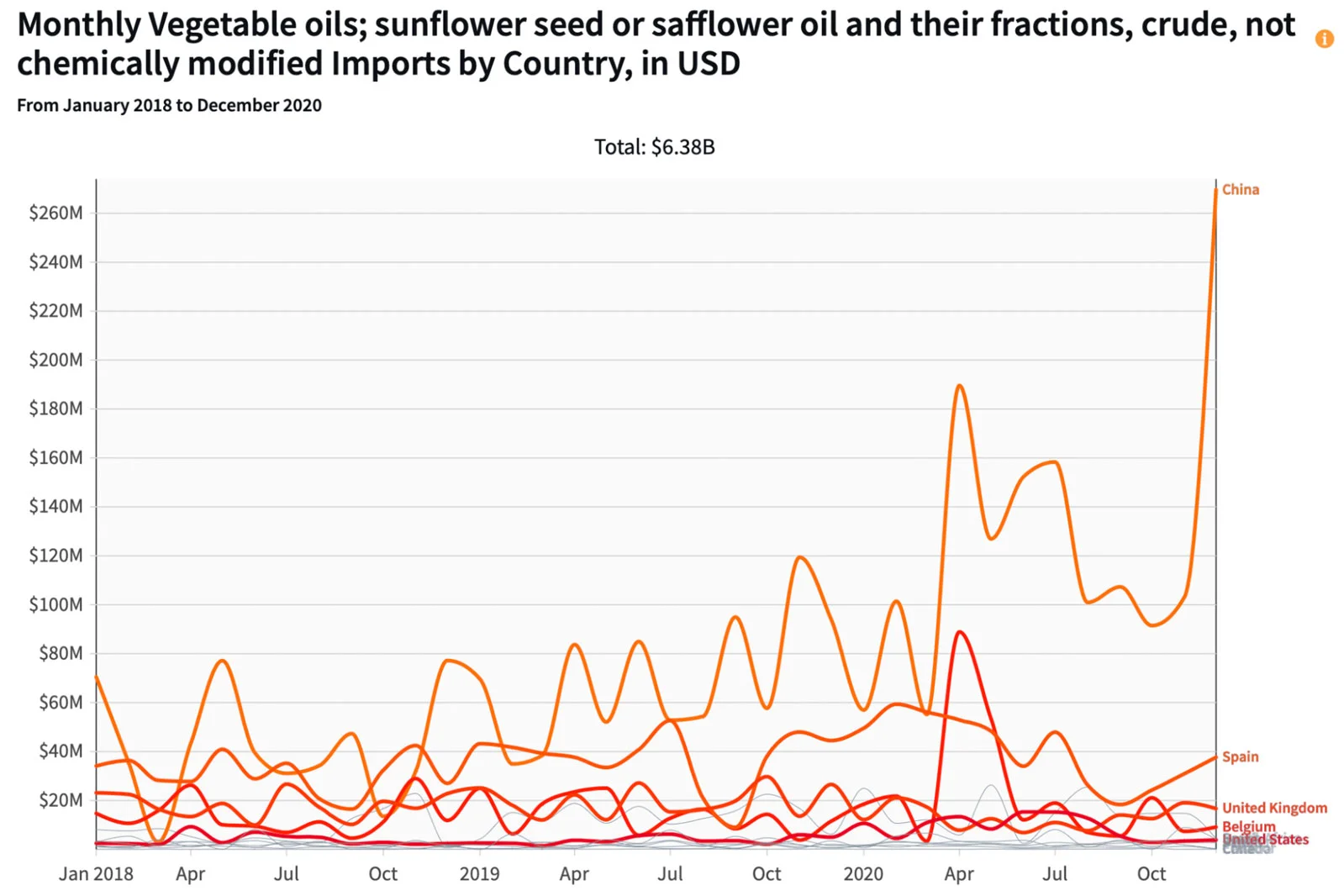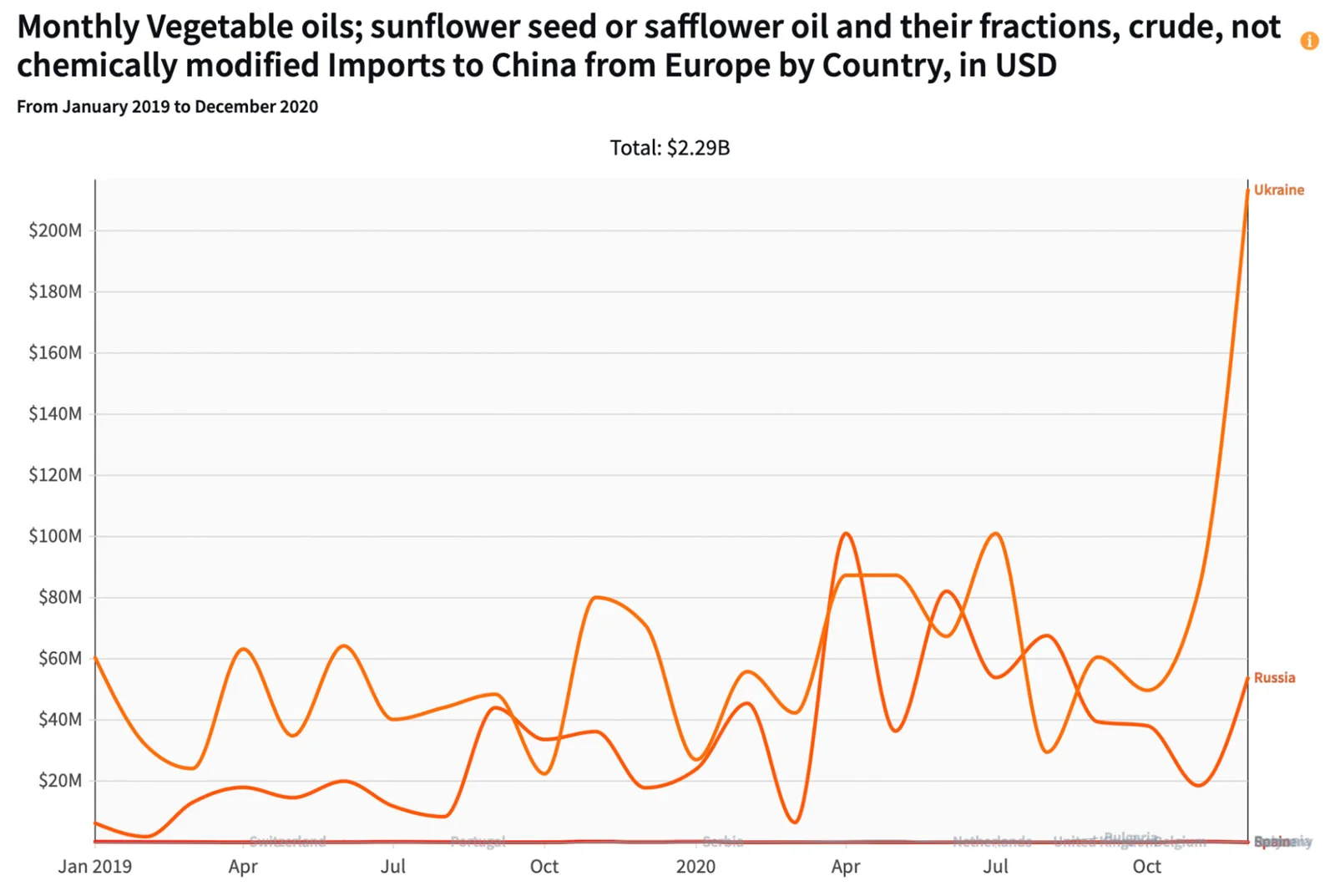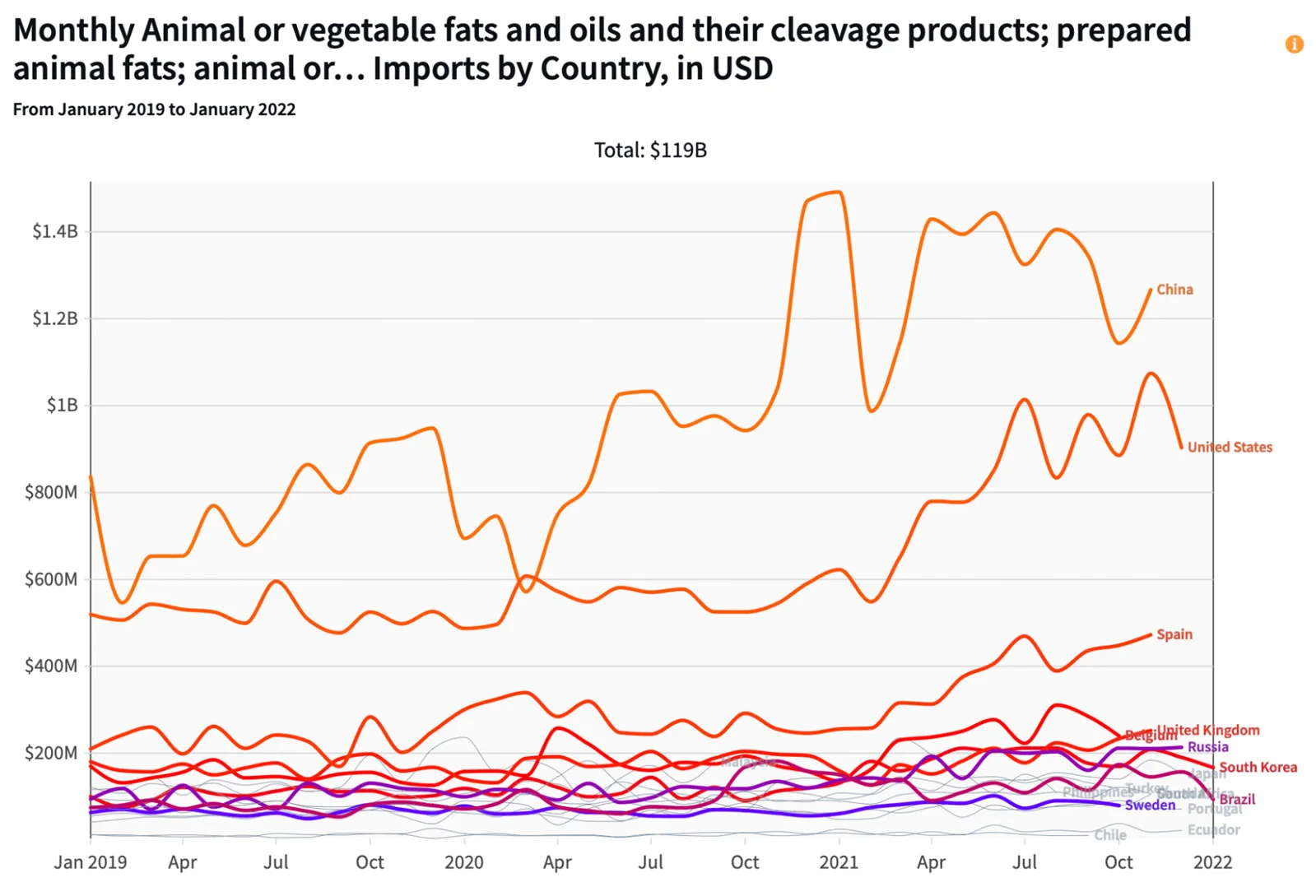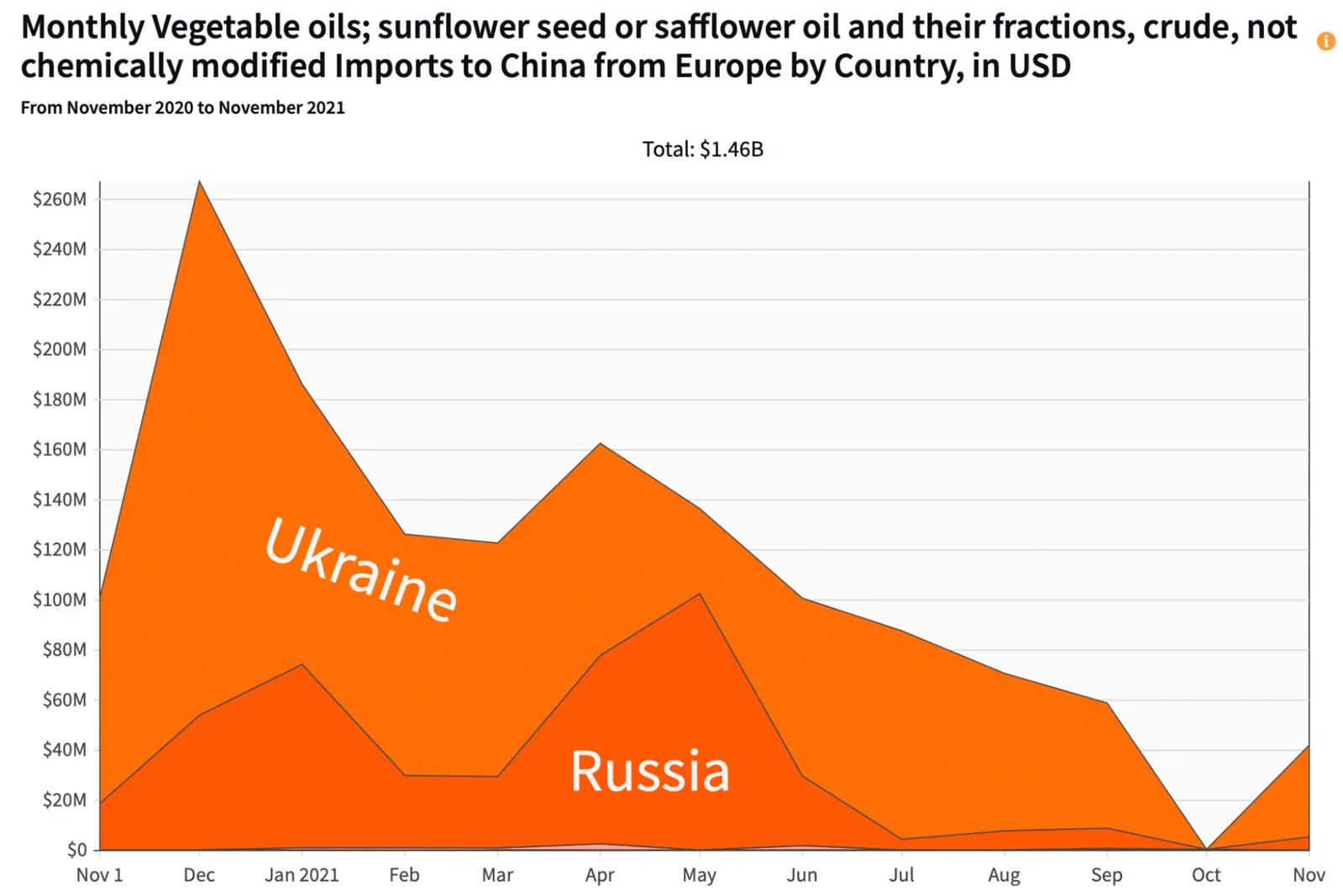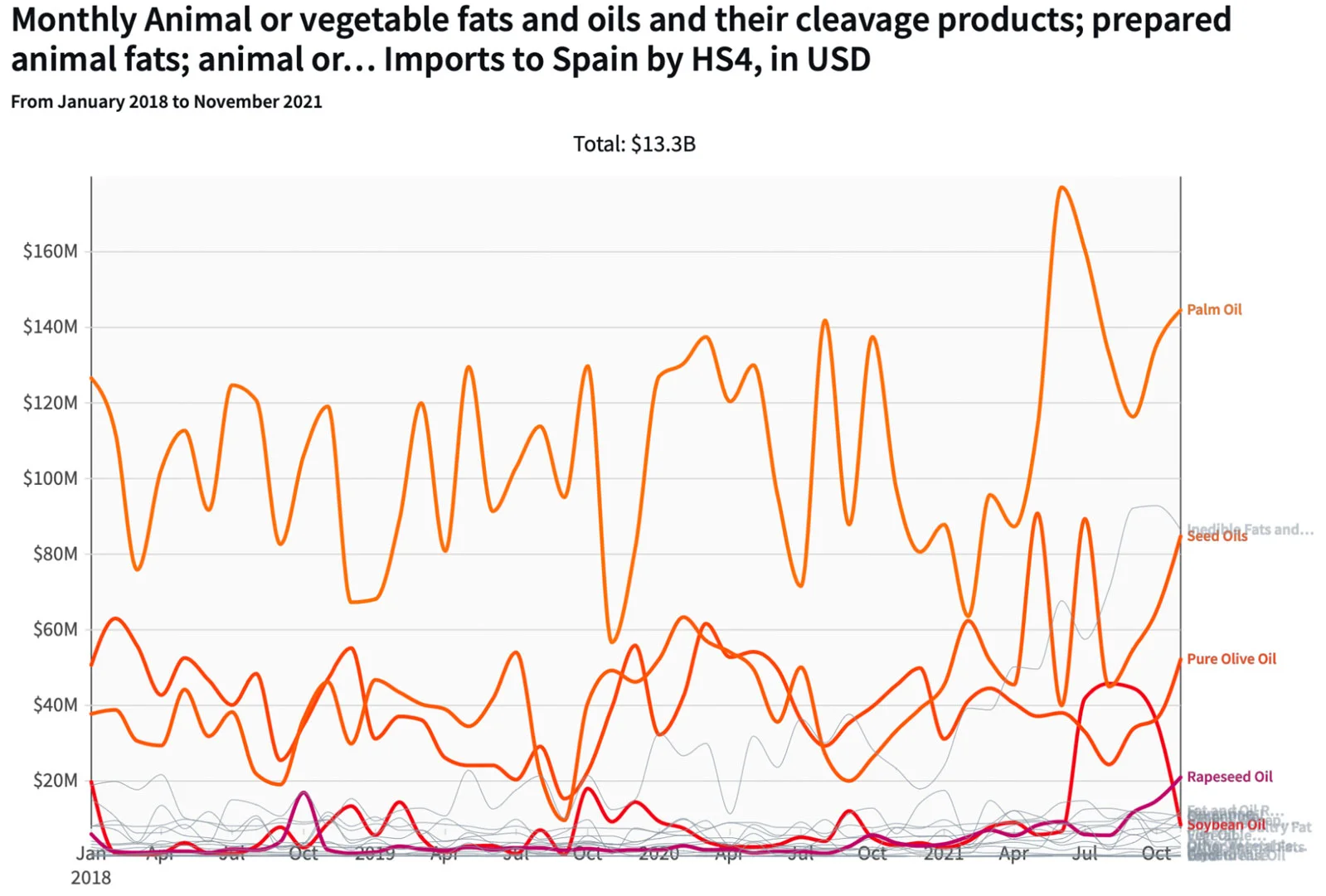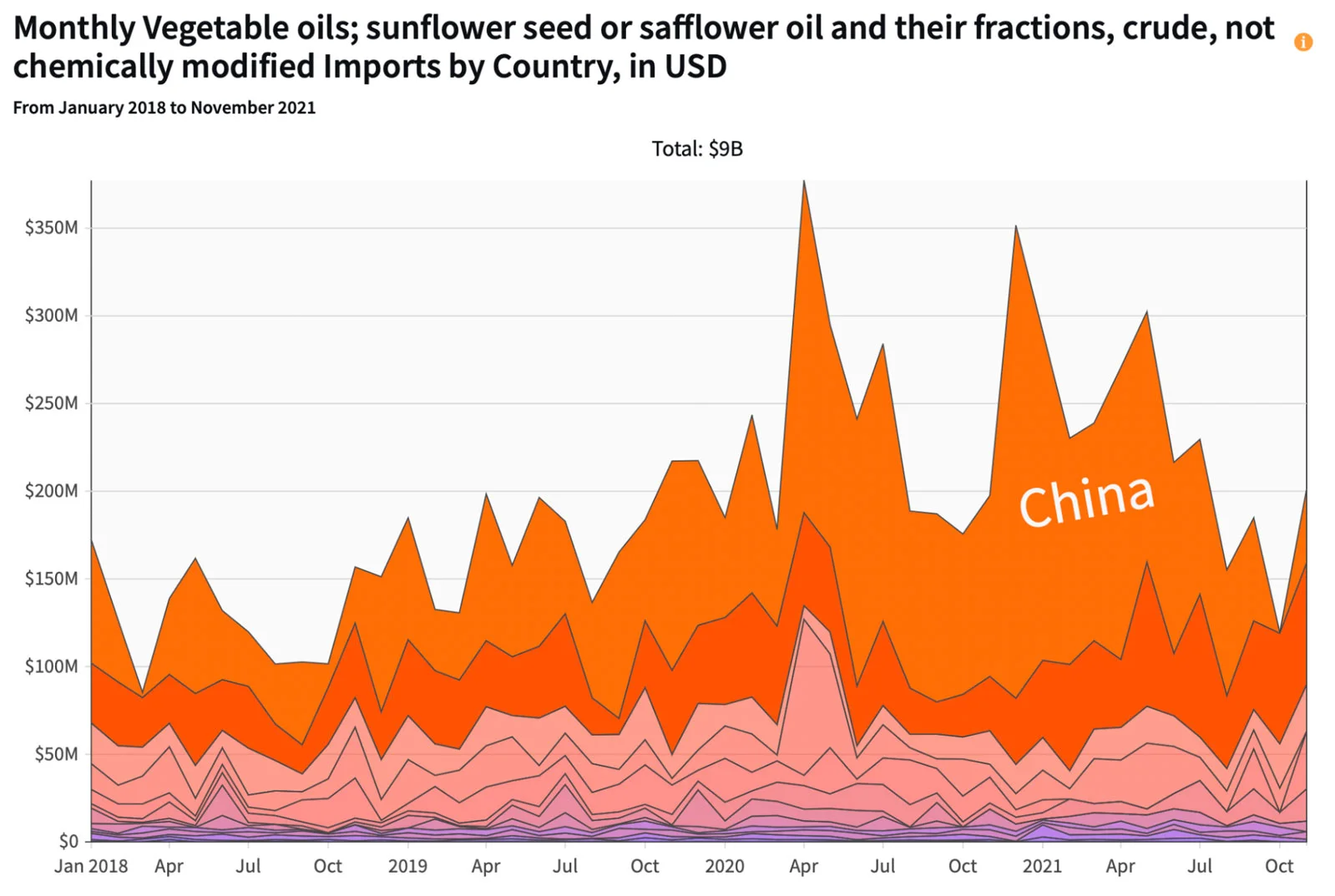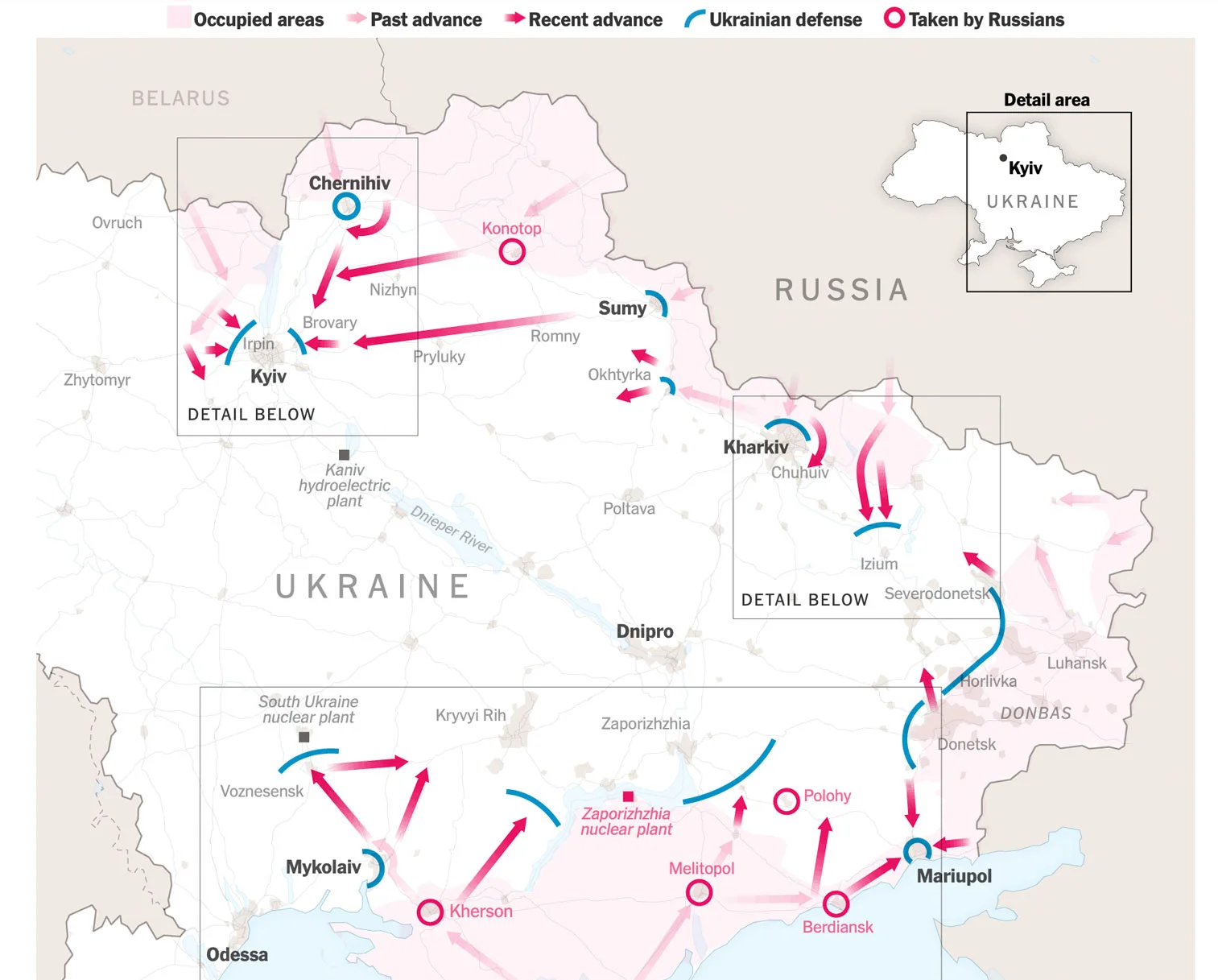The Other Sunflower Seeds War
Sunflowers are Ukraine's national symbol and the seeds for a global industry. The Russian invasion is creating a significant shortage worldwide.
Sunflowers are one of the few crops native to North America. When sunflower seeds finally arrived in East Europe in the 19th century, farmers bred them until a new sunflower plant could double the seeds’ oil content. Today, Ukraine and Russia account for two-thirds of sunflower seeds oil global exports. In 2019, Ukraine exported more than the rest of Europe, including Russia.
In the first three months of 2021, China’s global animal or vegetable oils imports decreased sharply. Although imports in China recovered before the summer of 2021, sunflower oil did not. Compared to November 2019, sunflower oil ↓ -$78.1M (-63.5%).
After the crash in China, palm oil imports bounced back and completed 2021 with 59.8% YoY growth. On the other hand, rapeseed oil (-15.9%), soybean oil (-85.9%), and seed oils (-65.3%) continued declining. Of all decline in seed oils imports, almost all came from sunflower oil from Ukraine (↓ -$45.6M; -55.4%) and Russia (↓ -$13.2M; -71.3%).
Spain, Italy, the Netherlands, and India are other significant markets for sunflower oil. However, palm oil has also displaced sunflower oil in some of these countries. For example, the top two importers of sunflower products in Spain, sunflower oil from Ukraine (↑ $4.48M; 13% in two years), has been replaced by palm oil from Indonesia (↑ $79.7M; 216% in two years).
In 2021, Ukraine was still the world's largest producer of sunflower seed and sunflower oil. However, between 2020 and 2021, sunflower seeds production declined 15% from the previous season due to dry conditions in the Kirovohrad, Kharkiv, and Dnipropetrovsk regions. To reduce food inflation, the Ukrainian government decided to limit sunflower oil exports even further.
Today, the sunflower seed fields in Kharkiv and Dnipropetrovsk are the battlefields in the invasion.
The world is facing a shortfall in sunflower oil. The shortage did not start with the war, but it has deepened even more as war blocks exports from Ukraine’s key supplier, FEDIOL. Sunflower oil continues to be essential, especially for Europe, as refineries in the continent source 35%-45% of their sunflower oil from Ukraine, and their available sunflower oil stocks are expected to cover four to six weeks.
In 2021, sunflower seed farmers in Ukraine’s central regions were severely affected by dry weather and trade policies. Severe drought affected 94% of Ukraine’s sunflower seed production area, and export limits reduced their share in the global market. A few months later, those farmers are fighting an additional battle. This time, their soil is affected by much more than bad weather.
